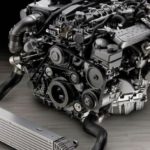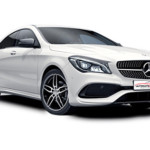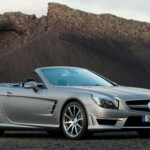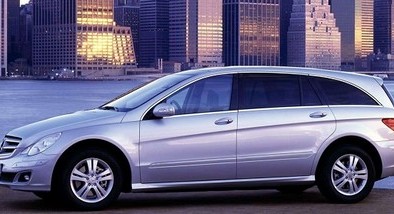Mercedes-Benz W115 and W114 series (1968 - 1976)
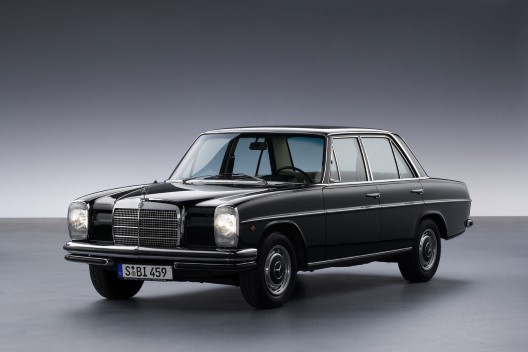
Mercedes-Benz W114 / W115 - Angular sedan measuring 4685 x 1770 x 1440 mm, weight 1360 kg, air resistance coefficient 0,45, then affordable, was produced with diesels from 55 to 80 hp and gasoline from 95 to 185 hp
The most successful model with a three-pointed star, in the 200 D version, the 'mother of all diesels', although expensive, was the best-selling car on the West German market in 1974, running a million kilometers without any problems.
Half a century ago, at the beginning of 1968, the first examples of the Mercedes-Benz W115 series (4-cylinder models 200, 200 D, 220 and 220 D) arrived on European and our roads, ie the more expensive W114 (6-cylinder 230 and 250). It was one of the best cars with a three-pointed silver star, which is among the fans, and in automotive history, as one of the best cars ever made, it is known as 'Strich-Acht', or 'slash - eight'. Mercedes / 8 ('Strich Acht').
It is an internal designation for the model, whose development was initiated in 1961, under the leadership of Prof. Dr. Fritz Nallinger, for the market start in 1968, ie for the year / 8. He also inherited the famous, but still less successful 'Repash', the W110 series. After an excellent initial success, it became a generally accepted label for that model. How successful it is confirms that in 1974, the year the Volkswagen Golf began production in May, it was the best-selling car in West Germany (140.127 units). It was the third series after the wartime upper middle class from Stuttgart, which has been called the E-Class since 1984.
The first model, introduced in 1953, was the W120 series (the W121 was introduced three years later), and it was marked 180 and 190 on the market. It will be remembered as the first European car with a 'pontoon' body (self-supporting and three-volume), which is thoroughly tested in crash tests. At the beginning of 1961, the famous 'repaš' of the W110 series was presented, which was marked 190, 200, 220 and 230. At the beginning of 1968, the angular model was presented, which became famous in our market in the 200 D series, and is still found in our roads.
In the most famous Mercedes series, with nine generations so far, the W115 is the third in a row - the current W213 has been on sale since 2016. Although Mercedes has been the leader in safety until then, 26 crash tests were conducted to improve safety. standards. With a mass of 1,4 tons and 55 diesel horses, it accelerated to 31 km / h in XNUMX seconds (as VW 'Beetle'), and after a long run it reached 130 km / h. Nevertheless, it was a luxury car 'par excellence', which was the 'law' among more powerful businessmen, taxi drivers, and even more successful guest workers.
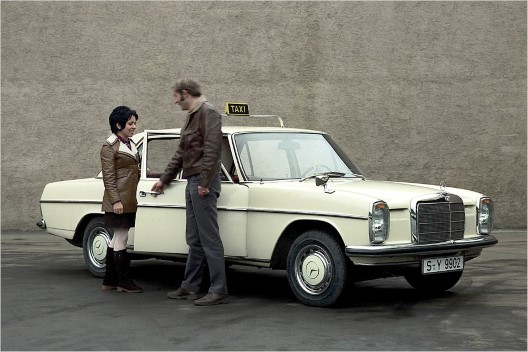
Consuming 7,1 to 9,5 liters, the 200 D diesel engine was significantly more favorable than gasoline engines, which consumed more than 15 liters, while being legendary reliable, ideal for taxi transport
The legendary OM 621 diesel engine, with a displacement of 1988 cc and 55 hp, was developed from an engine installed in the previous 190 D model. As early as 1956, it had a camshaft in its head, and in 1965 it received five crankshaft bearings instead of three. Among German taxi drivers, the most popular was the 200 D with a 3-speed automatic transmission, which reached only 125 km / h, and only after 35 seconds did the speedometer hand show 100. It was very durable, practically indestructible, and due to legendary sluggishness in Germany called ‘Schweine-Daimler’ (‘pig Daimler’). The diesel offer also included the 220 D with 60 hp (135 km / h).
The solidly built, sleek classic sedan, close to 4,7 m long, provided full comfort for five people, as evidenced by the 275 cm wheelbase and 450 liter luggage compartment. During that time, it was more than lavish. The Mercedes W115 has introduced a number of technological innovations. Instead of an oscillating shaft, which was a step forward towards the rigid axle, that is, a bridge, but also a step back (changing the angle of lateral inclination, which can be inconvenient for stability), a much more advanced, independent two homokinetic joints on each half-shaft and oblique, were introduced. shoulders.
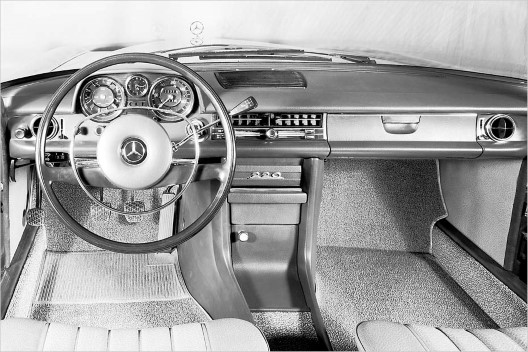
Following the example of the Citroën DS, a foot 'hand' brake was installed, the switch was next to the steering wheel and only in the latest series, like the 280 E, was it switched to the center ridge, between the seats.
This suspension is still technologically relevant today, and at that time it was revolutionary. For the front and rear suspension, special subframes are fitted, the disc brakes are fitted on all wheels, and additional brake drums are installed in the rear hub for the parking brake. In November 1968, a coupe version of the 250 C with 130 hp and 250 CE with 150 hp, with electronic injection of D-Jetronic was introduced. Then the luxury version, extending as much as 65 cm, to 533 cm, was also introduced. He was very successful among the exclusive taxi drivers, diplomatic services and the rich. Interestingly, ten thousand coupons and limo extensions were produced.
The interior was ergonomic, and by the standards of the time very luxurious. The first series had a manual transmission with a steering wheel. Although two thirds of all models were in the diesel version (in our market and 80 percent) they were successful than gasoline models. The most popular were the basic petrol models - 200 with 95 hp and 220 with 105 hp. Then came the 230.4 model with four cylinders and 110 hp and the 230.6 with 120 hp and the more powerful 280 with 140 hp. In the summer of 1973, a more powerful diesel arrived - 240 D with 65 hp (138 km / h), and in the summer of 1974, a 5-cylinder 240 D 3.0 with 80 hp.
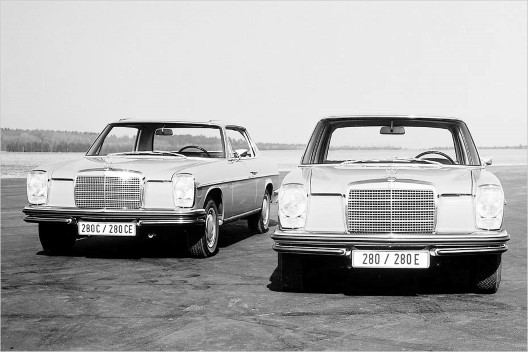
The most powerful petrol from the 280 got two camshafts and was boosted to 160 hp, and in the injection version 280 E to 185 hp. It was introduced in 1972 and reached 200 km / h, which was 'wow' at the time.
It significantly improved diesel performance, could pull 148 km / h and hit 19,9 in 1976 seconds. It was the fastest diesel of its time, but there was virtually no competition at the time. A number of special versions were produced, from medical to funeral, and it was one of the most successful cars of its time. Several wagon versions were also produced, but in small batches (from car bodies, not from Daimler-Benz). By 1,9, a total of 1,1 million models of the series had been sold, of which XNUMX million were diesel.
In our region, as the smallest model of the brand at that time, it was nicknamed 'Minika', under which it is still known today. It is one of the highest quality and most reliable cars ever made, many will say ‘the highest quality and most reliable’, the ‘real Mercedes’, which are no longer produced. Babaroga for all models on the market, comfortable, safe and indestructible. This is confirmed by the story of the Thessaloniki taxi driver Gregorios Sachinidis, who drove 240 million kilometers in a 1976 Mercedes-Benz 4,6 D.
Author: Zeljko Marusic
Retrieved from: www.autoportal.hr
Recommendation of similar texts:

Hi there, I am Mladen and I am an auto enthusiast. I started this blog years ago to help like minded people share information about latest cars, car servicing ideas, used car info, exotic cars, and auto technology. You will find helpful articles and videos on a wide variety of cars - Audi, Mercedes, Toyota, Porsche, Volvo, BMW and much more. Ping us if you have anything cool to share on latest cars or on how to make older cars more efficient, or just want to say hi!


